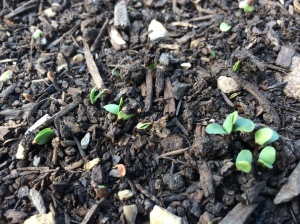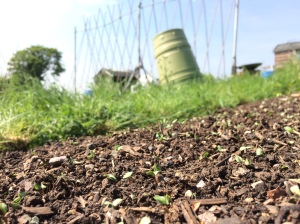Although I’ve been quiet on the blog there has been lots of activity on the flax front since I last posted. At the twineworks we had a second harvest/ flax gathering on the 2nd of October when many local growers brought in their homegrown bundles. It was a gloriously sunny and very social day – thanks to all those who made it along.
On the 14th October the ‘Ropewalkers’ exhibition opened at OSR where work by myself, Andy Parker and Simon Whetham has been on display for the past three weeks. A few photos of my work included in the show below. A review by Richard Povall has just been published on the a-n website, click here to read it.
Just over a week ago I was at the twineworks where together with Ross Aitken from the Coker Rope and Sail Trust we rippled and began retting some of the flax. Rippling involves combing the seed heads from the bundles which are then retted by submerging and weighing down the flax in water. It also used to be done out in the surrounding fields using the dew.
This bacterial process breaks down the lignin in the stalks of the plants and the fibres start to separate from the outer layers of the stem. In warmer weather it can take a week but as it’s now November and rather chilly I think it’ll be a few weeks before it ready to get out. It’s quite hard to know exactly what we’re looking when it’s ‘ready’ as we’re just going from written information. Under retted flax makes it difficult to separate the fibre and over retted means the fibres are damaged so there is a sweet spot of readiness – fingers crossed we find it!
Once retted the flax is dried (again) and then broken, scotched and that should leave you wit the raw fibres. Which then have to be hackled, dressed and spun to turn the fibres into yarn. It is all so labour intensive it amazes me this was ever a profitable process, even with extremely cheap labour. Hopefully on the next open day at the twineworks on Saturday the 26th November we will start the next stage – do come along if you’re in the area.




































